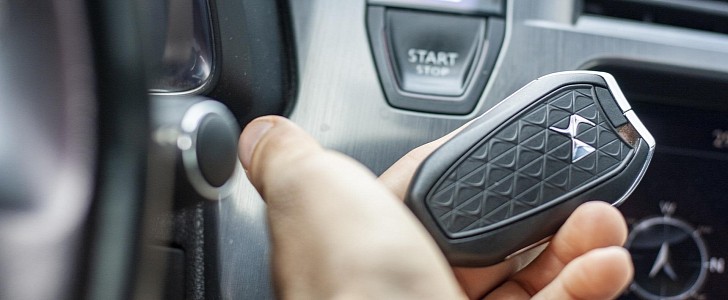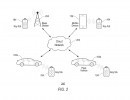The keyless entry systems are easy to break, thanks to vulnerabilities of the radio signals used to unlock the doors. Ford thinks it has a solution to prevent the most common theft method, called the key fob relay attack.
The keyless entry system adds convenience to unlocking and starting a vehicle since there’s no need to use a physical key anymore. The key fob can be kept in the pocket or a purse and everything works just like magic. Unfortunately, thieves discovered that too and soon stealing a car became as easy as buying a bottle of scotch. This is silly because the technology was supposed to improve theft prevention, not make thieves’ jobs easy.
To get access to a vehicle, thieves use a method called “key fob relay attack,” which involves relaying the radio signal from the key fob to the car. Thus, the car thinks the owner has approached with the key and opens the door accordingly. A push of a button later and the thieves drive off with your car.
To allow for spoofing the key signal, thieves rely on inexpensive radio devices that are readily available to buy from the internet. This works exactly like a walkie-talkie for the key signal. There’s one thief with a device who locates the original key or the car owner and a second one at the receiving end next to the car they try to steal. Once the connection is established, the door unlocks and the car can be started. This is why specialists recommend keeping the key fob in a tin can or, even better, in the refrigerator.
Of course, carmakers started to improve the system. Modern keyless systems put the key fob in sleep mode while not in motion, preventing any radio signal from being transmitted. But Ford thinks it found a better solution, and it filed a patent to protect it. Called “system for preventing vehicle key fob relay attacks,” the patent describes a new authentication system that allows the car to know whether the original key is near the car or not.
According to the patent filed on October 29, 2020, and published on May 5, 2022, the authentication system is able to obtain historical data including the time and location the key fob is used. Thus it can determine if the person trying to unlock the car is the owner or another person. For instance, since the car knows that the key moved away when the owner left the vehicle, it will not respond to a signal that suddenly appears in its vicinity.
This is far from perfect, as the spoofing devices can emulate the key even in approaching the vehicle, but it’s at least better than nothing. To avoid this kind of man-in-the-middle attack, it’s best to have a system that works at a very close distance. Newer vehicles use NFC to open and start, and this is far more secure than a radio signal that can be sniffed from further away.
To get access to a vehicle, thieves use a method called “key fob relay attack,” which involves relaying the radio signal from the key fob to the car. Thus, the car thinks the owner has approached with the key and opens the door accordingly. A push of a button later and the thieves drive off with your car.
To allow for spoofing the key signal, thieves rely on inexpensive radio devices that are readily available to buy from the internet. This works exactly like a walkie-talkie for the key signal. There’s one thief with a device who locates the original key or the car owner and a second one at the receiving end next to the car they try to steal. Once the connection is established, the door unlocks and the car can be started. This is why specialists recommend keeping the key fob in a tin can or, even better, in the refrigerator.
Of course, carmakers started to improve the system. Modern keyless systems put the key fob in sleep mode while not in motion, preventing any radio signal from being transmitted. But Ford thinks it found a better solution, and it filed a patent to protect it. Called “system for preventing vehicle key fob relay attacks,” the patent describes a new authentication system that allows the car to know whether the original key is near the car or not.
According to the patent filed on October 29, 2020, and published on May 5, 2022, the authentication system is able to obtain historical data including the time and location the key fob is used. Thus it can determine if the person trying to unlock the car is the owner or another person. For instance, since the car knows that the key moved away when the owner left the vehicle, it will not respond to a signal that suddenly appears in its vicinity.
This is far from perfect, as the spoofing devices can emulate the key even in approaching the vehicle, but it’s at least better than nothing. To avoid this kind of man-in-the-middle attack, it’s best to have a system that works at a very close distance. Newer vehicles use NFC to open and start, and this is far more secure than a radio signal that can be sniffed from further away.






